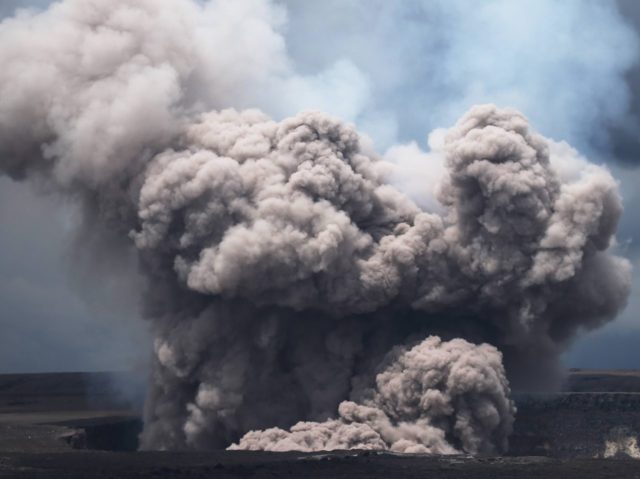Hawaii’s 4,200-foot high Kilauea volcano, which has been continuously erupting since 1983, is at risk of re-entering its explosive phase.
Geologists describe the activity since 1790 at the Halema’uma’u Crater inside the Kilauea Volcano as “dominantly infusive,” which means that its regular eruptions feature a steadily flow of lava onto the ground. The volcano erupted 27 times between 1960 and 1982, and has been considered in a state of continuous eruption since 1983.
But for 1,500 of its 2,500 years as an active volcano, Kilauea has been predominantly in “explosive eruption” phases.
The current visible phase of the eruption started about two weeks ago, with the formation of a scenic lava lake that generated 15 fissures oozing lava heated to between 1,300 and 2,200 degrees Fahrenheit along the outside lower eastern face of the volcano.
As a hole formed in the bottom of the crater and drained the lava lake about 652 feet lower, super-heated lava touched some water that instantly expanded into steam. The result was an explosion at 8:29 a.m. local time on May 10 that sent a plume of rocks and ash up a thousand feet above the volcano for about one hour.
Although the explosion was short-lived, geologists believe that the lava lake is still above the underground water table. But if the lava on the caldera is sucked down to the water table level, the explosive interaction could eject massive amounts of lava, poisonous gases, and choking ash.
The violent eruption would cause a continuous process of rock from the volcano’s inside walls to be shaken loose, fall into the lava, and then explode.
As the lava lake continues to drain and drop, the volcano could suffer the type of very violent phreatic explosions seen in 1924 that sent a huge plume of smoke up to 20,000 feet above the sea level.
If the lava lake drains to the water table, steam-driven explosions could throw blocks of rock up to six feet wide for distances of up to a mile. The projectiles, initially traveling at ballistic speeds, could be as light as pebbles or weigh several tons. Such explosions would also emit large amounts of poisonous sulfur dioxide.

COMMENTS
Please let us know if you're having issues with commenting.